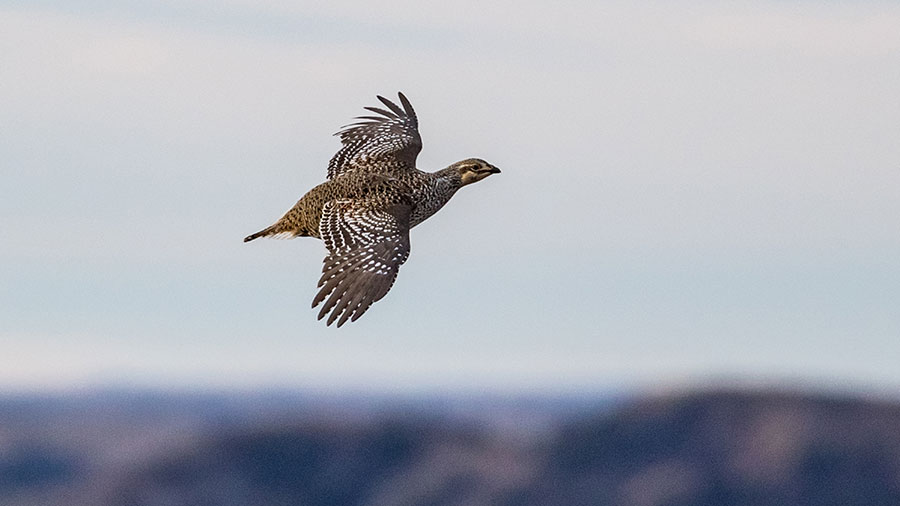Buffaloberry Patch has been a fixture in the back of the magazine for roughly 40 years. Home each issue to a collection of shorter pieces that are informative to those who recreate outdoors is something, after having a hand in North Dakota OUTDOORS for more than two decades, I’m naturally familiar with.
My understanding of the actual shrub, a staple over much of the landscape we roam, is limited. What I do know, like a lot of hunters have long figured out, is that the thorny buffaloberry plant “bites.” I’ve snagged flannel shirt sleeves an untold number of times while kicking around patches as big as my living room trying to flush sharp-tailed grouse.
As grouse hunters, we gravitate to the patches of buffaloberries in early season as the sun rides higher and temperatures rise because that’s where some of the birds, not all of them, head to the shade and loaf during the heat of the day.
The drawback to this gameplan is where in the heck do we start, and does it really matter? This neck of McKenzie County we’re hunting is big country and the buffaloberry patches are many in places, seemingly outnumbering the critters drawn to them.
With miles under our belts and sweat riding down our backs, I pause on a hilltop and watch as my boys and their younger legs kick through the buffaloberries and flush two sharptails hunkered in the shade. Both birds fall dead in calf-high yellow grass not 30 yards from the tangle of thorns and face-slapping branches.
Holding the birds in one hand by their feathered legs, the grouse swing by Jack’s side with each step. We agree, as we make our way over another hill to meet Nate, that we expected to see more birds considering the country we covered, but a two-bird hike is never a bad thing.
As we field dress the birds back at the pickup, we inspect their crops and find them, like the birds shot earlier in the morning, stuffed with grasshoppers and seeds that we can’t begin to identify.
We rinse out the inside of the birds, wash my pocketknife and hands of blood, and I think of the red buffaloberries that make the shrubs pop as they decorate the arid hillsides.
But not this fall. While the hardy, cold- and drought-tolerant shrubs look for the most part like we remember them, we have to poke through the branches to find even a few of the blood-red berries that give them their distinctive appearance.
Maybe we’re early and the fruit will turn while were home chasing grouse in Burleigh County, I wonder out loud, but a quick search on my phone when we have decent reception back at camp says the berries ripen by late summer.
I’m not a botanist, nor do I even know one personally, but if I had to guess the lack of ripened fruit is weather related … late frost, not enough of this, too much of that.
I read where according to folklore that an abundant crop of berries is a sign of a cold, snowy winter. While they didn’t specify what kind of berries, I’m going to hang my hat on the coming months being tolerable.


